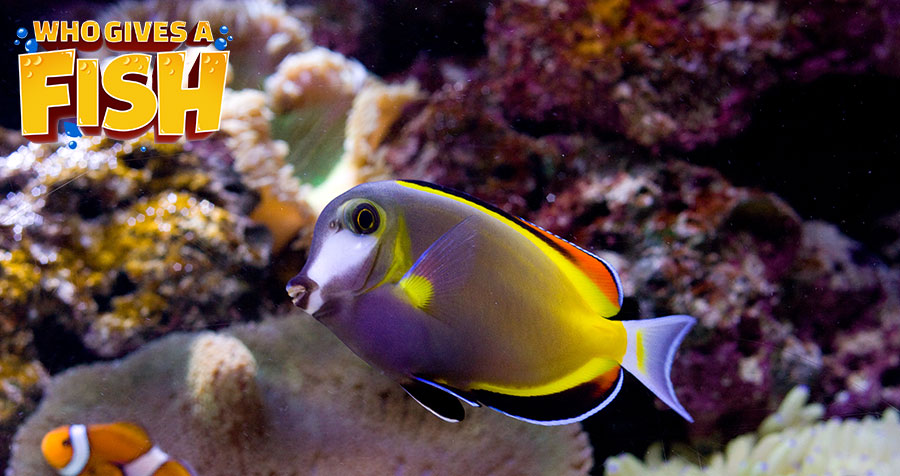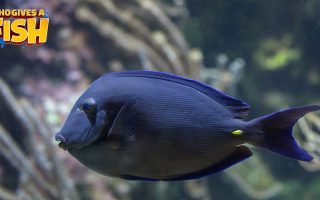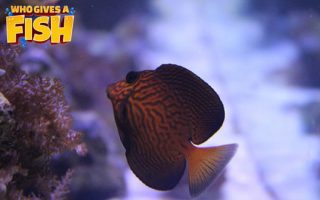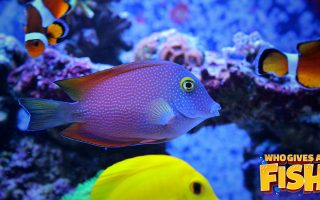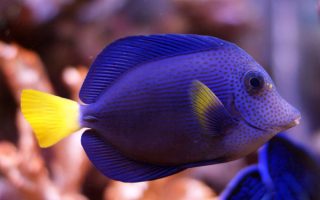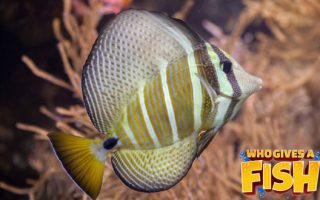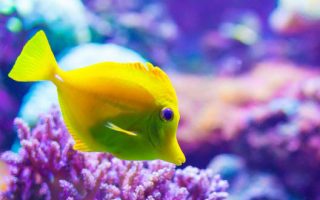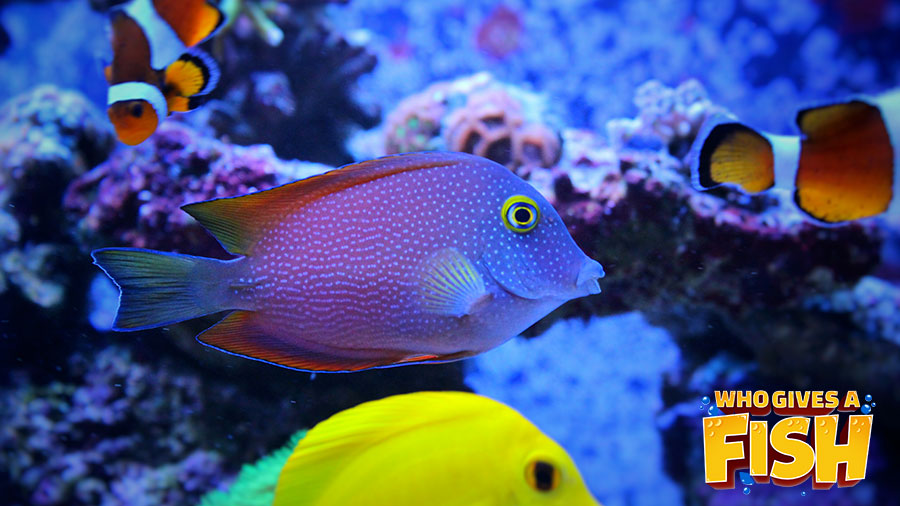Tang Fish
Tang fish, also known as Surgeonfish, Doctorfish, Tangs and Unicornfish are part of the Acanthuridae family. This is an old family that has lasted for over 50 million years. In the aquarium they are extremely rugged, and some would even say they are tough as nails.
Saltwater tangs vary in size from just a few inches to a few of the biggest, like the Whitemargin Unicornfish, Naso annulatus, that has been known to reach almost 40 inches (100 cm) in length.
Hence, many of them make very excellent specimens for the home aquarium, but some are really only suited for community aquariums. Surgeonfish sport oval bodies that are extremely condensed sideways and small mouths fit for scraping and nibbling small organisms from the coral and rocks.
The name Surgeonfish is acquired from them having razor sharp spines that are erectable. These scalpels are situated near the bottom of their bodies, and just before the tail fin. Tangs are swift and swim in an elegant fashion, descending in and out of the decor, and feeding on tiny pieces of algae. But they can sometimes be territorial. Their spines are particularly sharp, and are able to cut like a knife, and fish that handle these razors are extremely talented with their swords. With a swift turn of their tail these swords turn into powerful weapons.
Tangs are usually a decent public fish, are excellent in a reef, and some types of Surgeonfish are able to be housed together. These fish rapidly become accustomed to their keeper and home, coming forward for foods, and a few have even been trained to allow to be petted. Just be wary when cleaning the tank, and particularly when the need emerges to capture them.
The Surgeonfish are part of the Acanthuridae family. They are an extremely old fish, with their fossils dating back over 50 million years to the Tertiary period (Eocene) where the age of mammals began. This particular species is easily distinguishable from other fish by the spines or spine situated on either side of the caudal peduncle, or the bottom of the tail fin. These spines are either fixed or foldable. They are fairly sharp, and blade-like, identical to a scalpel.
As a bunch they are collectively referred to as Saltwater Tangs and Surgeonfish. The name ‘surgeonfish’ comes from their unusual scalpel-like spines. The name ‘tang’ comes from the German word ‘Seetang’ which basically translates to seaweed and refers to their feeding practices. But a few different bunches within this family are also referred to as Combtooth Tangs, Unicronfish, Bristletooth or Sailfin Tangs.
The famous ‘unicornfish’ belongs to the Naso genus. They are referred to as the Unicornfish as a few of the species have a horn-like protrusion on the forehead. The name ‘sailfin tang’ is most commonly given to the more popular species in the Zebrasoma genus. The Ctenochaetus genus are usually referred to as combtooth or bristletooth tangs, because of their particular way of feeding. Atlantic species from both the Prionurus and Acanthurus genera are often referred to as the ‘doctorfish’ tangs.
Habitat
Saltwater tangs are commonly located in all of the tropical seas all over the world, with the one exclusion being the Mediterranean. Some are found in fairly shallow waters, particularly where the water is clear and the dead coral, rock or rubble is uncovered and where decent sunlight is providing nice algae growth. Estuaries, Coastal waters and harbors are primary areas for these fish.
Some species of Surgeonfish can get very big, with some species known to reach up to around 40 inches (101 cm). These bigger fish are not suited for a home aquarium, but will most likely be featured in community aquariums.
They mainly eat plant matter with most feeding done on the reef, but will often pick at the detritus on the tank floor, and there are a few that feed primarily on zooplankton. At nightfall they sleep in little crevices or caves in the reef.
Tang Fish Care
A lot of the Surgeonfish can be rugged aquarium inhabitants in an appropriate environment that is properly maintained. The particular species of Surgeonfish differ slightly in respect to their care requirements and ruggedness, but they generally require big quantities of plant material and algae. They also require a big sized aquarium with proper decor for hiding places, but one that also has plenty of open swimming space along with well oxygenated water and a lively current.
The water quality is required to be stable and clean. Although Surgeonfishes can be fairly rugged, they are extremely susceptible to skin diseases, generally Marine Velvet and Marine Ich. They will yield to illness rapidly in a less than ideal habitat. These fish eat a plenty and as a result, generate a lot of waste, so the addition of a protein skimmer is crucial.
Saltwater Tangs are an excellent addition to a reef where they will constantly feed on algae growth. Make sure to keep an eye on them, as a few species have been known to have an appetite for sessile invertebrates, such as large-polyped stony corals. This demeanor usually begins when grazing for feces, but a few tangs then start to nip the polyps and moth of the coral itself.
They generally make excellent tank mates in a public setting too, yet they will not endure their own kind, and are often hostile towards other species of tang. It’s a good idea to keep one tang per tank, unless the tank is extremely big and you are an expert aquarist. Tangs are often combative against other herbivores if they are added after they are established.
Due to their spines being scalpel-like, you need to take extra care when handling these fish to escape receiving a painful cut. A cut from the spines of these fish can cause swelling and discoloration of the skin with a high risk of disease. The affliction usually lasts for hours then still winds up having a monotonous ache. It is advised to use a fine latticed net when capturing them to avoid them from getting tangled in the net.
They should ideally be fed several times a day. When in the wild, algae are their main source of food, and they are constantly browsing. They should mainly be offered a diet based around vegetables at least three times a day. Supply dried or frozen marine algae and prepared herbivores foods or even some broccoli occasionally. The dried macroalgae, Japanese Nori, is usually liked and spinach or Romaine lettuce can be drifted in the aquarium for feeding.
They will likely require a few meaty foods, mainly as juveniles to add mass. Meaty foods comprise of krill, brine shrimp, plankton, blood worms and chopped clams.


